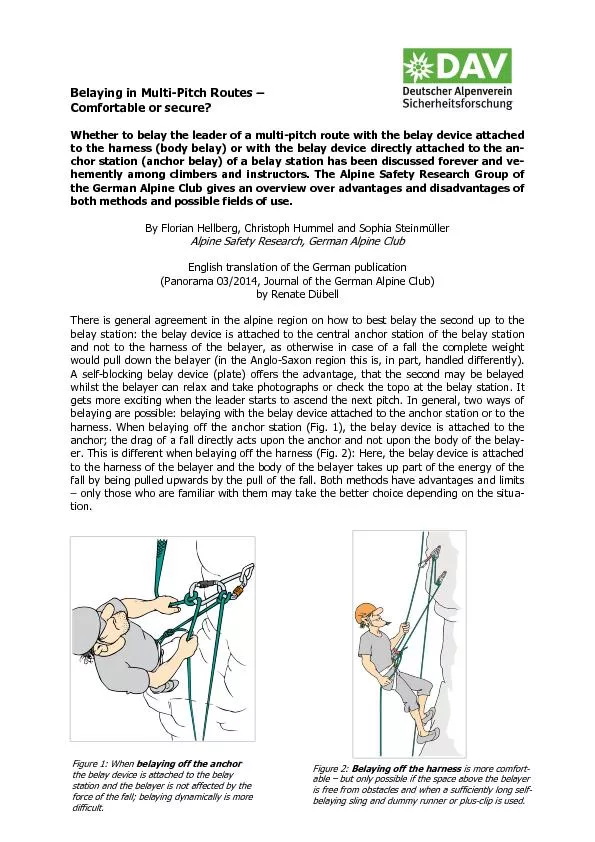PDF-Belaying in Multi-Pitch Routes Comfortable or secure?Whether to bela
Author : trish-goza | Published Date : 2016-05-14
Figure 1 When belaying off the anchorthe belay device is attached to the belay ation and the belayer is not affected by the force of the fall belaying dynamically
Presentation Embed Code
Download Presentation
Download Presentation The PPT/PDF document "Belaying in Multi-Pitch Routes Comfort..." is the property of its rightful owner. Permission is granted to download and print the materials on this website for personal, non-commercial use only, and to display it on your personal computer provided you do not modify the materials and that you retain all copyright notices contained in the materials. By downloading content from our website, you accept the terms of this agreement.
Belaying in Multi-Pitch Routes Comfortable or secure?Whether to bela: Transcript
Download Rules Of Document
"Belaying in Multi-Pitch Routes Comfortable or secure?Whether to bela"The content belongs to its owner. You may download and print it for personal use, without modification, and keep all copyright notices. By downloading, you agree to these terms.
Related Documents












